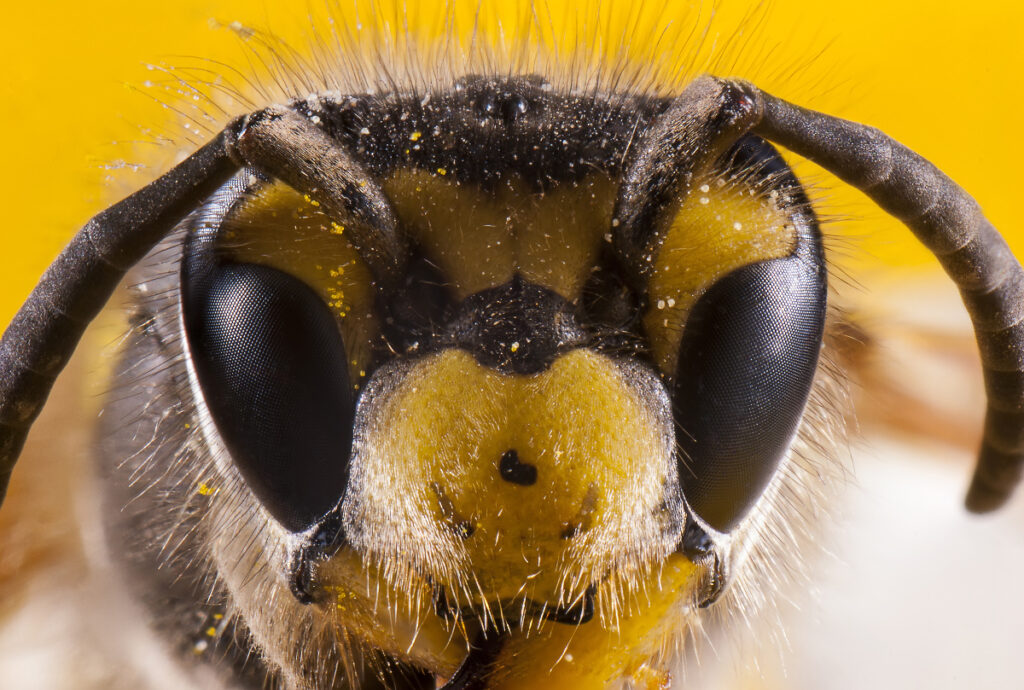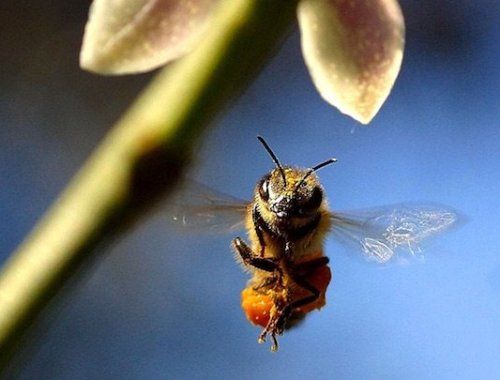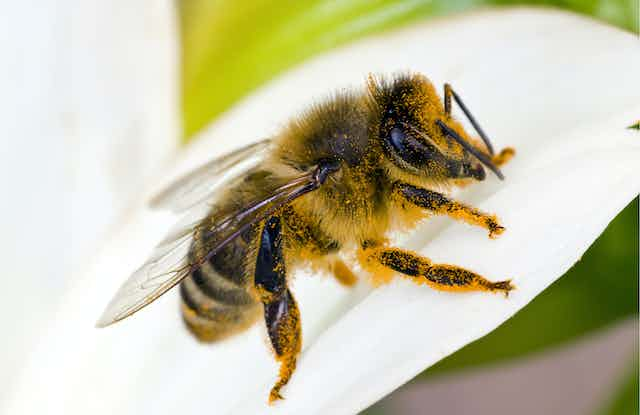
Imagine a world where colors are not just a feast for the eyes, but a roadmap guiding you through life. For bees, this world is a reality. In “Sensing The World: How Bees Perceive Their Surroundings!” we uncover the fascinating ways in which these tiny creatures navigate their environment, relying on senses beyond our comprehension. From their ability to see ultraviolet light to their intricate dance language, join us on a buzzing exploration of the unique sensory world of bees.
Sensing The World: How Bees Perceive Their Surroundings!
Bees are fascinating creatures that play a crucial role in our ecosystem as pollinators. One of the many remarkable aspects of bees is their ability to perceive and interact with their surroundings through various senses. From vision to taste, touch to temperature, bees have evolved intricate sensory systems that allow them to navigate their environment and carry out their vital pollination tasks. In this article, we will explore the different ways in which bees sense the world around them and delve into the fascinating mechanisms that enable them to do so.
Vision
Number of Eyes
Unlike humans, bees have not just two but five eyes! They have two large compound eyes on the sides of their head, each consisting of thousands of individual lenses called facets. In addition to these compound eyes, bees also possess three simple eyes known as ocelli, located on the top of their head. These ocelli provide the bee with light intensity and direction cues, aiding in their navigation and flight.
Compound Eyes
The compound eyes of bees are highly specialized and allow them to have a wide visual field. Each facet of the compound eye sees a slightly different image, and the brain of the bee processes these images into a mosaic, giving them a panoramic view of their surroundings. This panoramic vision helps bees detect predators and navigate complex environments, such as locating flowers for nectar collection.
Spectral Sensitivity
Bees have a unique ability to see beyond the range of human vision. While humans perceive light across a spectrum of colors, bees can see ultraviolet light, which is invisible to us. This ability is particularly important for bees when it comes to finding flowers. Many flowers have nectar guides, which are patterns or markings that are visible only in ultraviolet light. Bees can detect these guides and use them as a visual cue to locate the nectar-rich flowers.

Smell
Olfactory Receptors
Bees have a highly developed sense of smell, thanks to their olfactory receptors. These receptors are located on the bee’s antennae and play a vital role in various aspects of their lives. Bees use their sense of smell to detect pheromones released by other bees for communication, find flowers from a distance, and even locate their hive. The olfactory receptors of bees are incredibly sensitive, allowing them to pick up even faint odors present in the environment.
Navigating Through Pheromones
Bees rely heavily on pheromones, which are chemical signals emitted by individuals of the same species, for navigation and communication. For example, worker bees release a specific pheromone called the “queen substance” to signal the presence of a queen in the hive. This pheromone helps maintain the social structure and organization within the colony. Bees also use pheromones to mark food sources, guiding their fellow bees to the location of abundant nectar or pollen.
Hearing
Vibrations
While bees do not have ears in the traditional sense, they are still capable of sensing vibrations. Bees can detect vibrations through their bodies, particularly through their legs and antennae. For example, when a flower is vibrated by a visiting bee, such as through its flight or buzzing, the bee can sense these vibrations, signaling the presence of a potential food source.
Communication Through Buzzing
Bees communicate with each other through buzzing sounds. While the primary purpose of buzzing is not for hearing but for communication, bees can still detect and interpret these sounds as part of their sensory perception. Buzzing plays a crucial role in various aspects of bee life, such as mating rituals, defending the hive, and alerting other bees to sources of food.

Taste
Nectar Detection
Bees have a highly developed sense of taste, allowing them to detect and discriminate between different flavors. When bees visit flowers, they use their proboscis, a long tongue-like structure, to probe the depths of the flower to collect nectar. During this process, taste receptors on the bee’s proboscis identify the presence of sugars and other chemical compounds, helping the bee determine the quality and nutritional value of the nectar.
Preference for Certain Flavors
Interestingly, bees have preferences when it comes to taste. They are particularly attracted to flowers with higher sugar content, as this provides them with more energy. This preference for sweet-tasting nectar is beneficial for both the bees and the flowers. Bees act as pollinators, transferring pollen from one flower to another as they collect nectar. In turn, flowers reward bees with sugary nectar, ensuring the continuation of their species.
Touch
Sensitivity to Vibrations
Bees have a remarkable sense of touch and sensitivity to vibrations. They can detect and interpret vibrations through various parts of their body, including their antennae, legs, and wings. This sensitivity to vibrations allows bees to communicate with each other and perceive their environment. For example, bees may engage in specific movements, such as the waggle dance, to communicate the location of a food source or indicate the direction and distance to the hive.
Mechanoreceptors
Bees possess specialized sensory structures called mechanoreceptors that help them perceive physical stimuli. These mechanoreceptors are located throughout the bee’s body, but they are particularly concentrated in areas such as their antennae and legs. These receptors respond to mechanical pressure and deformation, allowing bees to detect and respond to tactile stimuli, such as the texture of surfaces they land on or the movements of other bees within the colony.

Temperature
Thermoreception
Bees have the ability to sense and respond to changes in temperature, a process known as thermoreception. This thermoreception allows bees to regulate their body temperature and maintain optimal conditions within the hive. When external temperatures become too hot, bees use various cooling strategies, such as fanning their wings, to lower the temperature inside the hive. Conversely, during colder temperatures, bees huddle together and generate heat through their metabolic activities to keep the hive warm.
Detecting Heat Sources
Bees can also detect heat sources in their environment. This ability is essential for bees when it comes to locating potential food sources, such as flowers. Certain flowers produce more heat than their surrounding environment, making them stand out to bees as attractive options for foraging. By detecting these heat sources, bees can efficiently navigate and make decisions about where to find the best food resources.
Magnetic Field
Navigation Using Earth’s Magnetic Field
Bees possess a remarkable sense of magnetoreception, allowing them to navigate using Earth’s magnetic field. This ability enables bees to orient themselves and find their way back to the hive, even if they have traveled a long distance. Bees use small iron particles in their bodies, believed to be magnetite crystals, which align with the Earth’s magnetic field and act as a compass for navigation.
Magnetite Crystals
The exact mechanism through which bees detect and utilize Earth’s magnetic field is still not fully understood. However, it is believed that the presence of magnetite crystals in their body plays a significant role. These magnetite crystals are thought to be located in certain parts of the bee’s body, such as the abdomen, and act as tiny compasses, helping bees maintain their direction and orientation during flight.

Polarized Light
Orientation and Navigation
Bees have the ability to perceive polarized light, which helps them with orientation and navigation. Polarized light occurs when light waves align in a specific direction. By detecting polarized light, bees can determine the position of the sun, even when it is hidden behind clouds. This ability to perceive polarized light is crucial for bees to maintain a reliable sense of direction and make accurate navigational decisions.
Sunlight Detection
In addition to perceiving polarized light, bees are also highly sensitive to sunlight. Bees use the position of the sun as a reference point to navigate. They compensate for the sun’s movement throughout the day, ensuring they can find their way back to the hive. This sensitivity to sunlight aids bees in orientation, allowing them to accurately assess distance, direction, and time of day.
Conclusion
Bees are extraordinary creatures with remarkable sensory abilities. Through their compound eyes, olfactory receptors, vibrations sensing, taste, touch sensitivity, thermoreception, magnetoreception, and perception of polarized light, bees have developed an intricate system for perceiving and interacting with their surroundings. These sensory adaptations are crucial for bees to navigate their environment, locate food sources, communicate with each other, and carry out their vital role as pollinators. Studying how bees perceive their surroundings not only provides insights into the fascinating world of these incredible insects but also offers valuable knowledge that can be applied to various fields, such as environmental conservation and robotics.
